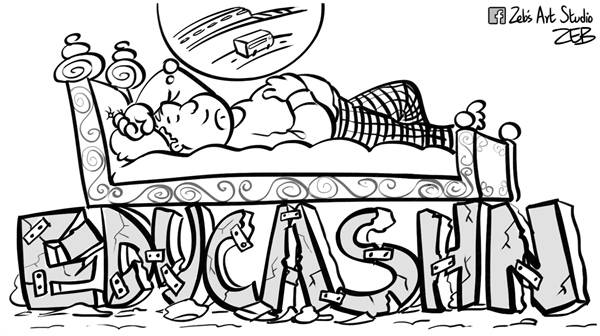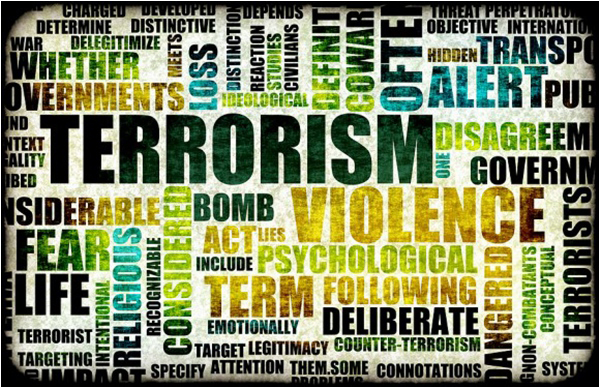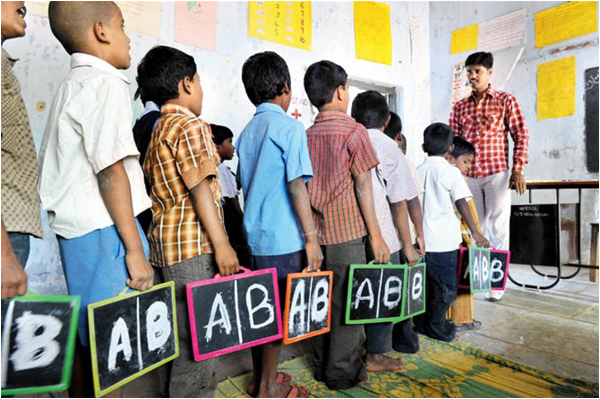
Dismal state of education
Sir,
Education is vital for human development and a nation’s development. Therefore, education is always given primary priority by nations desiring to survive. Balochistan, already the most backward province of Pakistan, has been suffering from an insurgency since decades, which in turn has damaged almost all sectors. Experts have suggested many solutions. I believe education, rather quality education, is the only solution that will pave a way for the development of the province.
Education reforms are the only means by which we can combat terrorism, extremism and sectarian violence, in a bid to eradicate these evils from their roots.
The eighteenth constitutional amendment committed Pakistan to free and compulsory education for all children between the ages of five and sixteen. And the Balochistan government has already declared an education emergency in the province and enforced Article 25-A of the constitution. Yet, more than 60 percent of children are out of school in Balochistan. A majority of people cannot afford private schools, which vary greatly in terms of quality, methodology and teacher qualifications. Many schools are established in baithaks (guestrooms) of influential people, and even those are mostly inaccessible for the common man. Many schools consist of little more than a single room with a single teacher. Teacher absenteeism and “ghost schools” exist only on paper. Some school buildings have been taken into possession by influential people and are being used to house their livestock.
Loralai is ranked 130 out of 148 districts of Pakistan, according to the Alif Ailaan Pakistan District Education Rankings 2015, while it is ranked 22 out of 32 districts of Balochistan. Almost 89 percent of total government schools in the district only cater to primary level needs. There are 723 government schools, out of which 642 are primary level schools. Of the 723 government schools, only 26 percent of schools (182 schools) are for girls, whereas 74 percent of schools (508 schools) are for boys. According to the School Census 2013-14 conducted by the Balochistan Education Management Information System (BEMIS) – Directorate of Education, interestingly, at the higher secondary school level, there are no schools for boys, whereas there is just one higher secondary school for girls in the district. 52 percent of total children aged 5 to 16 years are out of school, which comes to around 67,781 children. Of all the boys, 38 percent are out of school. Of all the girls, 67 percent are out of school. 47 percent of children have never seen the inside of a classroom (i.e. have never been to schools). The net enrolment rate at the primary level is 40 percent.
This drops to 10 percent at the middle level and is only 1 percent at the high school level. Net enrolment rate of girls at the primary school level is 32 percent, whereas for boys this percentage is higher at 46 percent. Almost 70 percent children are enrolled in government schools, 26 percent students are enrolled in private schools, whereas 4 percent is enrolled in madrassas.
In the end, as a citizen of Pakistan, I demand that in order to ensure the survival and future of Balochistan, Pakistan make serious sincere efforts for education reforms. PM Nawaz Sharif committed in his election campaign and on international forums to increase the allocation to education in the annual budget to four percent of GDP. The provincial government should also release the development budget for education at the soonest.
Saboor Ahmed Kakar,
Balochistan.

Saudi-Iranian strife
Sir,
Saudi Arabia and Iran are two regional powers in the Middle East who act as two big divides in the region as far as religious ideologies are concerned. Both states are backing their allies in their respective neighbouring countries. This funding has led to many armed conflicts where these states are not direct participants. Iran is largely being supported by Russia, while KSA is America’s friend. The Iranian nuclear programme is being perceived as a threat by the Saudis. Riyadh is reportedly considering the option of launching its own nuclear programme, as its ‘enemy’ is pursuing it as well.
KSA and Iran are divided by longstanding structural tensions. Each has inspirations for Islamic leadership and each possesses different visions of regional order. Tehran regards Riyadh as America’s proxy and a buffer against Iran’s rightful primacy in the Gulf. Saudi Arabia worries about Iran’s asymmetric power and regional ambitions, especially its expanding influence in the post-Saddam Iraq and its alleged pursuit of a nuclear weapons programme. A particular concern in Riyadh is Iran’s ability to challenge the legitimacy of al-Saud before a regional and domestic audience by upstaging them on pan-Arab issues such as Palestine.
Their ties worsened after Shia cleric Sheikh Baqir al-Nimr was beheaded along with 47 others in Saudi Arabia. The Iranian response resulted in the attack on a Saudi embassy in Tehran by a violent mob. This led to Saudi Arabia severing diplomatic ties with Iran. Several other countries like Bahrain and Sudan also cut diplomatic ties with Tehran. This led to more tensions in the region. Pakistan’s civil-military leadership visited Saudi Arabia and then Tehran so that the tension between the two countries could be resolved.
The regional dynamics are changing as Iran is improving its ties with the West. After the nuclear deal has been signed, Iran expects to receive billions of dollars that were confiscated by world powers as a result of sanctions. Saudi Arabia on the other side is not at all happy with the Iranian nuclear deal, as it perceives this as a threat for the region. The rise of Iran would make the region insecure, as power dimensions would be disrupted. This rise would also threaten Israel, which is often being criticised by the Iranian leadership.
In this atmosphere, Washington needs to be clear about its priorities if it wants to get anything done with Riyadh. The United States should cooperate on issues where common interests are clear, such as stabilising Yemen, containing Iran’s regional power, destroying al-Qaeda and its regional affiliates. It should encourage the Saudis to reconsider policies such as isolating the Iranian government and stoking Shia-Sunni animosities that could harm both the US and Saudi interests in future by making clear that overall cooperation on security issues requires these steps. Finally, US policymakers should make clear that nuclear proliferation by Saudi Arabia would put at risk any future collaboration on security issues.
Masooma Batool,
Islamabad.

Attack on BKU
Sir,
Bacha Khan University in Charsadda became a target of a group of terrorists at about 9:30am on January 20, 2016. The militants it seems took full advantage of the thick morning fog, and opened fire on students and teachers in classrooms and hostels. An intensive exchange of fire took place between the attackers and the country’s security forces. Naturally, the atmosphere turned extremely gloomy as the wailing and apprehensive parents of the students consoled each other and ambulances lined up outside the main entrance of the university.
It is said that our valiant soldiers came into action, yet again, and after a six hour-long gun battle succeeded in gunning down the four militants involved in the attack. It has been reported that the terrorists resorted to indiscriminate firing the moment they entered the precincts of the university. The death toll, though not as large in number as the Army Public School (APS) Peshawar episode of December 16, 2015, has left an indelible mark not only on the minds of those who lost their near and dear ones in the massacre, but the entire nation.
The terror attack lunched by extremists on Bacha Khan University on January 20 is an outright act of barbarism.
The attack has, in fact, further strengthened the commitment of the Armed Forces and the Pakistani nation to fight the ongoing war against terrorism with greater conviction. Let’s fight the handful of heartless terrorists till they are completely wiped out from our soil. Let’s not get cowed down by the sporadic incidents of terrorism.
M Fazal Elahi,
Islamabad.

Lineage of education model
Sir,
The prevalent structure of the education model has evolved not simply by chance but as a consequence of the industrial age during the 19th century. During this time, there was a major paradigm shift in society in the life styles of people from an agrarian society to an industrial one. For instance, in the pre-industrial age (the agrarian society), the mode of transportation was the ‘horse’ and in the industrial era the ‘train’ became the major source of transport. Similarly, the education model in the agrarian society prior to the 1850’s was the ‘one-room school house’ where religious institutions (the church) delivered moral education and the family head passed the necessary employable skills of the time to their children. Public education did not exist as it was not the need of the time. But with the advent of industrialism in the 19th century, there was a spur of numerous inventions that created colossal employment and entrepreneurial opportunities. Huge productions houses (factories) were built that needed thousands of workers with certain skills that focused on producing mass products efficiently, the management made sure that the workers worked at their maximum output and produced standardized products while maintaining standardized quality. To fulfill this requirement, certain skills needed to be taught to thousands of workers which were obviously not taught in the pre-industrial age model of education (the church and home based). These industrial skills such as shoveling, soldering, painting or the different jobs on the assembly lines created significant challenge for the factory owners because the existing society at the time was agrarian that were only familiar in using the basic farm tools. In order to provide a regular supply of trained workers for the factories, it was important to educate the masses and this became a movement known as public education. It was a revolutionary idea that public education was to be paid from taxation, made compulsory and free for all.
Children as young as 5-years old worked in factories and to train them as efficient workers was a tough challenge for this new world, where the work environment was composed of indoor toil, noise, smoke, machines, high temperature, collective discipline, crowded living conditions where time was strictly regulated by the factory whistle and the clock. Alvin Toffler writes, “The whole idea of assembling masses of students (raw material) to be processed by teachers (workers) in a centrally located school (factory) was a stroke of industrial genius.”
The demand for factories was to get a regular supply of workers in the relevant skills, which required that the masses be educated. To achieve this, single unit schoolhouses were not able to handle the sheer number, and thus emerged the multiunit schools where standardised education was delivered regardless of addressing the multiple identities of students. And this in fact is the current education model. These schools were operated and still are operated like factories: children are recruited and instructed according to their age groups; ringing bells are still used to regularise movement and induce specific information; students’ line up during movements from one place to another; the classroom seating arrangements resembles the factory floor. Our current education model still mirrors the factory model of education. The concept behind it is that people will only do what they are reinforced to do and punished if they do not comply. The purpose of the factory model of education was never to provide support to students to attain high levels in terms of learning and creativity, but rather to learn certain skills applicable in the factories merely as a managerial convenience. It is amazing to know that the present education system still practices the philosophy of conformity and many have the view that “some children simply still cannot learn” by drawing conclusions from test data scores.
Conformity in education has popularised the usage of standardised tests and curriculum in the present day scenario, and this in reality means that education is considered a business product with commercial value synonymous to measuring the factory workers productivity. Education superintendents, principals, teachers and students are motivated by incentives and threatened by sanctions where the incentives would be salary increments or performance bonuses and the sanctions in case the school, students or teachers fail to achieve the predetermined test scores could possibly mean termination, demotion, or expulsion from school. Since the focus of education has become “test scores”, schools are managed predominantly by business principles such as accountability, control, regulation, quality assurance, cutting cost and maximising profits. The interpretation of education, which is the holistic amalgamation of teaching and learning with meaning and purpose that keeps the multiple interests of students in place is the key. Quality in education, which is now seemingly nothing more than an “empty word”, has become an enigma. Children attend their regular school; the parents teach them at home, they then learn the courses in the private academies or the cramming centers (as referred to in some countries) and finally regurgitate it in a standardised exam. As mentioned earlier, the approach to academic learning is to continuously repeat a task long enough that becomes an instinctive response.
M Amer Bhaur,
Lahore.
Cricket issues
Sir,
Pakistan cricket team opener Ahmed Shehzad has performed inconsistently in T20 International matches in the recently concluded series against New Zealand. He scored 33 runs in 3 innings at an average of 11.00. In the last nine T20I matches, Ahmed Shehzad has only scored 142 runs (15.77 average) with the highest being 46. In the last 10 ODI matches, Shehzad scored 298 runs (29.80 average) with the highest being 95.
It is now time to drop Ahmed Shehzad from the T20I team for the upcoming T20 Asia Cup and ICC World Twenty20, which will be held in Bangladesh and India respectively. Kamran Akmal should be picked for these tournaments.
In the recently concluded One Day Cup, ex-opener Kamran Akmal (captaining National Bank of Pakistan) performed marvelously as he scored 576 runs in 8 matches at an average of 72.00 with a strike rate of 97.46. Kamran scored six fifties and one hundred in the tournament and was named the Best Batsman at the tournament.
Spot fixing tainted former Pakistan cricket team captain Salman Butt was also in superb form as he scored 536 runs at an astonishing average of 107.20. Many will argue (same like Mohammad Amir) that Salman Butt should not be selected for the national side. However, I disagree as Salman has now completed his punishment and should therefore be given a chance.
However, Salman must perform in two or three more tournaments consistently and his behavior should be monitored before his inclusion in the national side.
For now, it is time for Kamran Akmal to get the position of Ahmed Shehzad as a batsman, as wicketkeeper Sarfraz Ahmed is doing his job properly.
Mubashir Mahmood,
Karachi.

Accountability in PIA
Sir,
PIA can only be saved if its top management is cleansed of the rot that is destroying it from within. Unless the federal government has political will to walk its talk and appoint professionals with integrity, instead of corrupt cronies, this organisation has no hope for survival. Whatever the game plan, privatisation or restructuring it will only achieve the desired objectives if there is transparency. All irregular appointments need to be reviewed. Let a judicial investigation be set up with full powers.
If an accountability drive can be initiated against the brothers of retired General Kayani and other retired khaki officers for conflicts of interest and gross irregularities in real estate scams, what prevents the government from proceeding against serving and former employees of PIA who have robbed this state-owned organisation.
Gull Zaman,
Peshawar.

